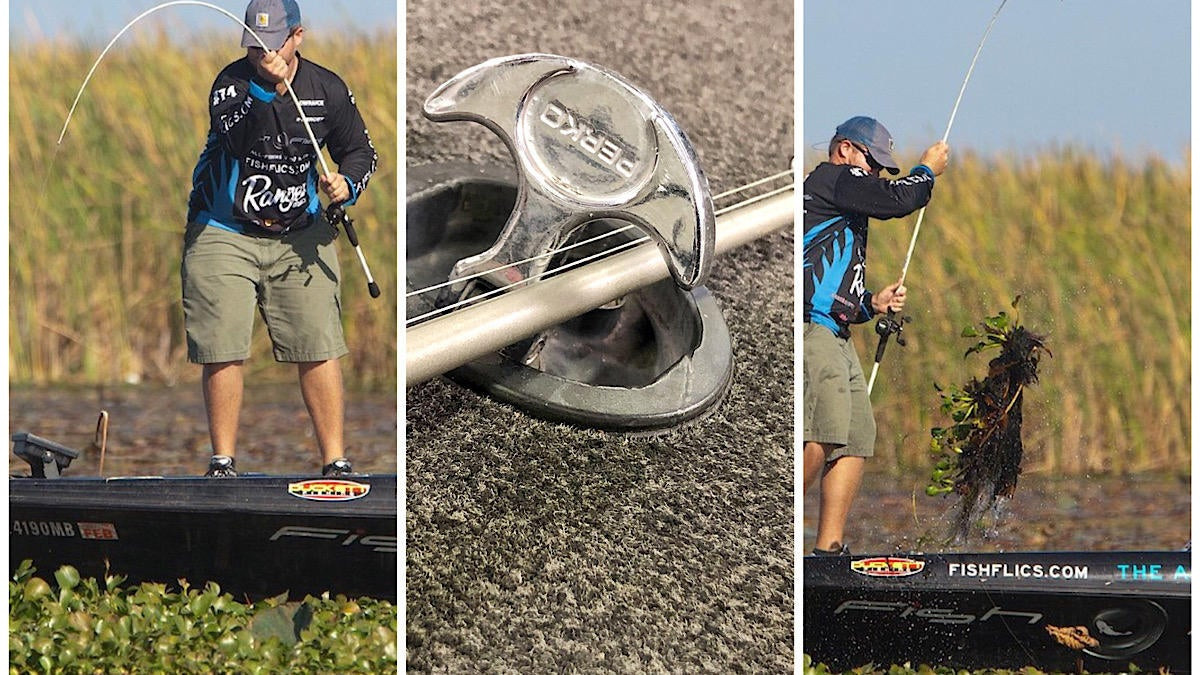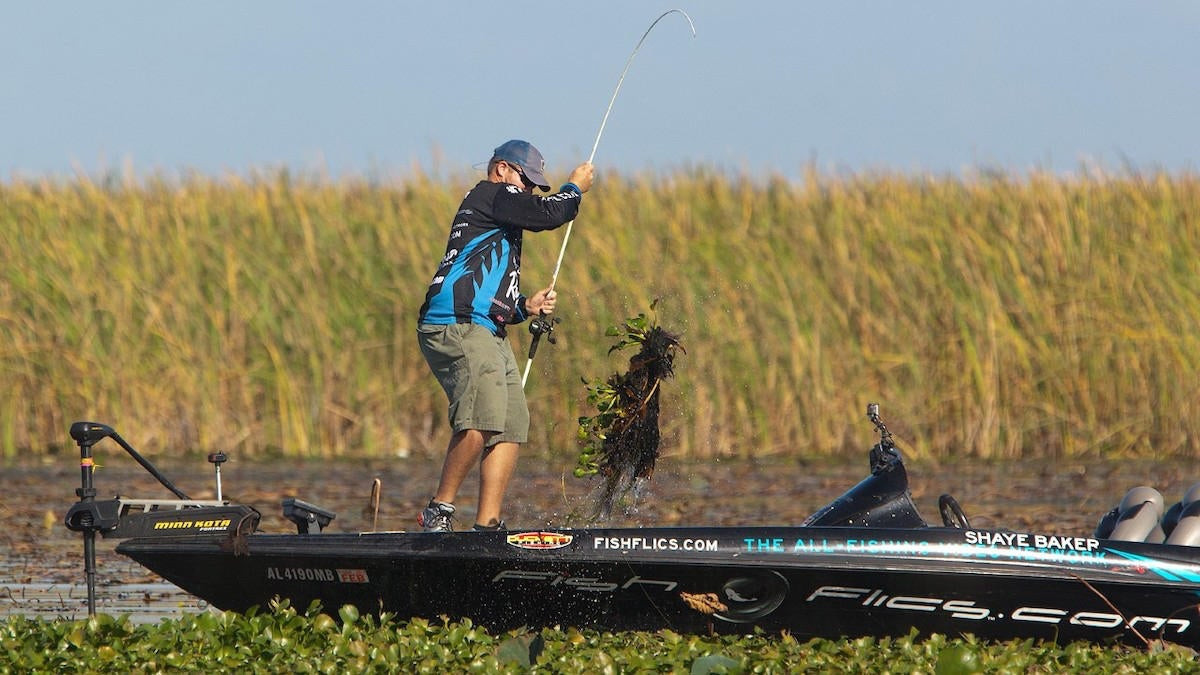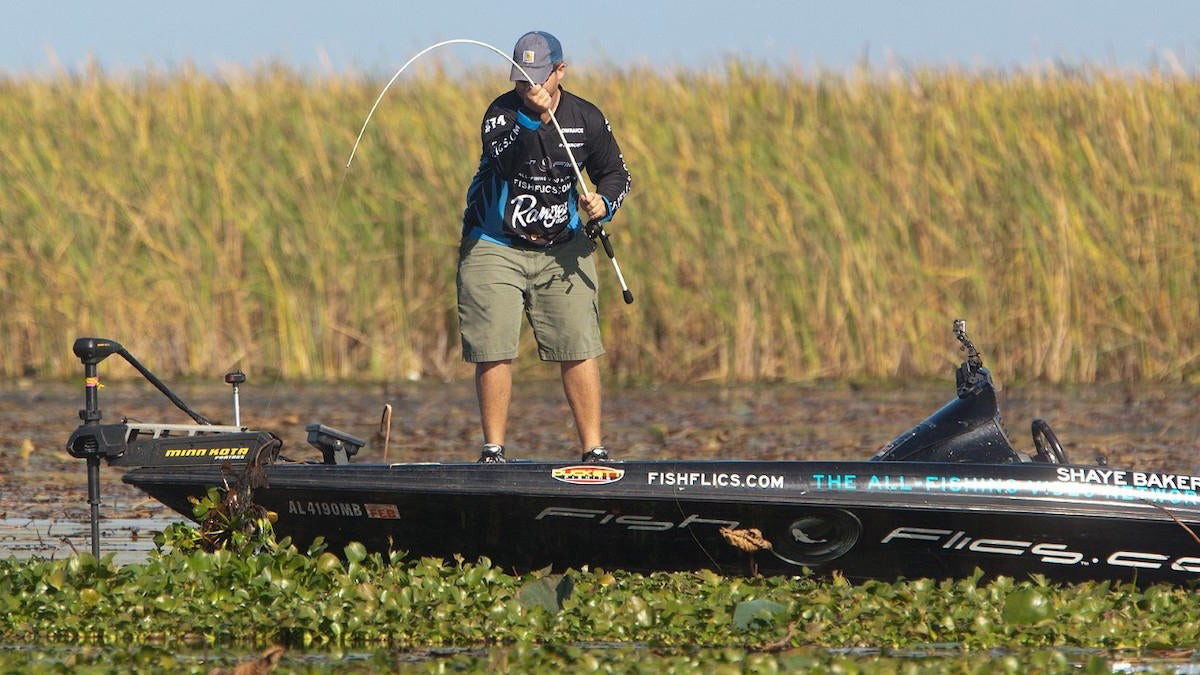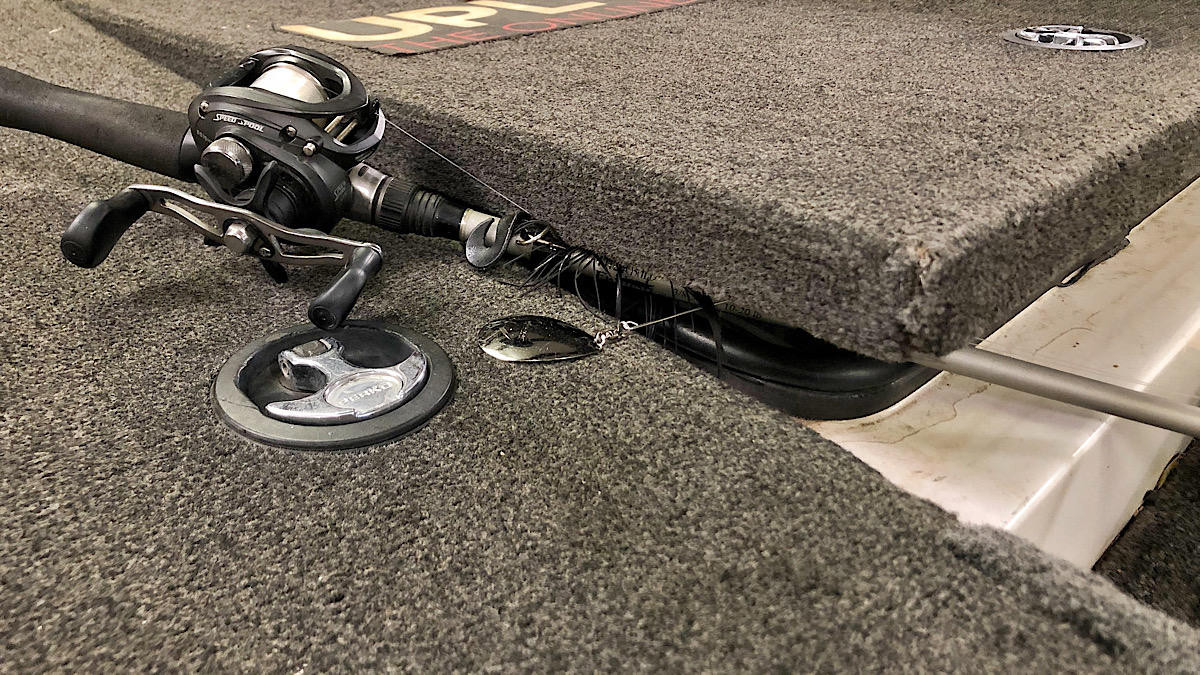Personal experience is the inspiration for much of my writing. I believe in a lot of ways that lived experience is the best educator. It’s for this reason you see medical students attending classes for six years, only for all that schooling to culminate with hands-on job experience in clinicals before they’re awarded their degrees.
I recently completed another bit of education myself in the school of hard knocks with hands-on experience. I learned how to screw up boat-flipping a bass which created the idea for this article. I wanted to hopefully clue you guys in on three things you want to be certain not to do to prevent you from breaking a rod.
Inevitably, a rod will break at some point even if one of these three instances don’t occur. But hopefully, this piece will prevent you from having to learn these particular lessons the hard way at least.
High-sticking a fish
Recently I was fishing a Wednesday night pot tournament with my dad. It was getting late and pretty close to dark. Suddenly a bass (and a pretty big one at that) exploded on my frog. The fish hit in about a foot of water and went absolutely berserk. In a matter of three seconds or so, I had involuntarily run from the front of the boat to the back deck and was faced with an ultimatum as the fish tail-walked its way down the side of the boat.
I instinctively boat flipped the fish… or tried to, at least. As I eluded to, it was close to dark and in the madness of the situation with all the sloshing, I mistook the fish for a pound or two heavier than it was and made the mistake of thinking I had more line out than I did. So as I swung the 4-pounder into the boat, I did so with the enthusiasm it would have taken to swing a 6-pounder… and I did all this with about two feet of line out.
One of the biggest rookie mistakes I’ve made in a long time.
The combination lead to about 16 inches breaking of the tip of my rod, my 40-pound braid being cut clean by the broken rod and the fish bouncing twice across the deck of the boat and out the other side. All while dad and I watched helplessly and took a minute or two to fully grasp what had just happened.
I’ve heard this referred to as high sticking. Essentially, it all comes down to putting too much pressure on the last foot to two feet of your rod tip in a vertical position. I thought the fish was bigger than it was, so not wanting to bang it off the side of the boat, I ended up lifting it too high in the air. Add to that the short length of line I still had out and when my rod tip got high… snap. A very unfortunate and avoidable set of circumstances and a lesson learned the hard way.
One hand too high
I’ve also broken a rod before by sliding one hand too far up the blank. Most rods are built to have a parabolic bend or at least bend to some degree all the way back down to near the reel seat. If you have a rod that is designed to bend this way-say a 7-foot, medium heavy-action rod-but then you slide your hand up near the first eye of the rod as you go to boat flip a fish, you can very easily break a rod as well.
The reason being, you’re not allowing the rod to do what it was designed to do. It is unable to disperse the bend across the whole rod and now by placing your hand in that section, you’ve created a pivot point that can turn a 7-foot, medium heavy-action rod into a 3-foot, extra heavy-action and a 4-foot medium light-action real quick.
You see this happen quite often as well when trying to pull a snagged bait free; perhaps even more so than when boat flipping a fish. When we’re snagged, we have a tendency to slide our non-reeling hand up the rod and put a big bow in the remainder of the rod as we pull to either free our bait or break our line. Though this mistake is often only done a time or two before a loud crack and another hard lesson is learned.
If you find yourself in this situation, where you have been unable to free your bait and are left with only the option of pulling to try to bend the hook or break the line, tighten your drag all the way down and pull with your rod tip pointed straight at the bait. Your spool will try to slip but hold it the best you can with your thumb and you should be able to free your bait, break your line or pull whatever obstruction on which you’re snagged to the boat. Just be wary of a hook flying back at you if you’re snagged above or near the surface of the water.
Avoid obstructions in the boat
If you’re fishing from a boat, there are quite a few precautions to take. Closing a lid on a rod is a notorious no-no that is so easy to do. I’ve sat down countless times to retie, lifted the lid of a storage compartment in the boat, handled my business and then as I go to close the compartment, caught the lid just before it crushed my rod.
Unfortunately I haven’t caught it every time though, especially in my younger years. Those lessons learned have made me keenly more aware of where my rod is in relation to the lids these days. When a lid lands on a rod blank like this, you often don’t break the rod in that moment. In fact, you often won’t even hear a crack or notice anything wrong with the rod upon immediate inspection.
But the next time you go to cast, your rod will fold over in the back swing like a set of nunchucks. Or if the damage isn’t quite as severe, you may make it through a few casts before you get your next bite and then when that bite comes and you go to set the hook, an explosion happens at that newly created weak spot.
Tie-down cleats are another awful rod breaking opportunity on a boat. It seems if I lay a rod across the gunnel of a boat, it’s going to slide its way right under a cleat every time. And it’s so easy to pick it up not having noticed and damage the rod or even break it entirely in that moment without much effort at all.
You also want to watch out for compartment lid handles, as many of them are extremely easy to catch a rod under. Just for good measure, keep an eye on your fishing partner’s feet as well. Some guys have some real toe-getters on the dance floor that’ll wreak havoc on the front deck of a boat as well.
In conclusion
If we wanted to get creative, there are dozens of ways to break a rod. But these three we’ve discussed today are pretty common and can sneak up on even an experienced angler fairly easily. Knowing how to swing a fish properly and how to attempt to pull your bait free correctly will instantly eliminate a lot of the risk you’ll have on the water of breaking a rod.
Then just being keenly aware of the hazards within your boat will help minimize the risks as well. Watch out for compartment lids, cleats and handles and you’ll have identified a lot of the most heart breaking, rod breaking culprits in your rig. Not to mention your buddy’s big, clumsy feet again.
Keeping a cautious eye on all these things will hopefully help you learn some of these lessons the easy way, through the humbling mishaps of your fellow angler and favorite outdoor writer. Or a favorite outdoor writer of yours at least if you will, and I hope you will.
















